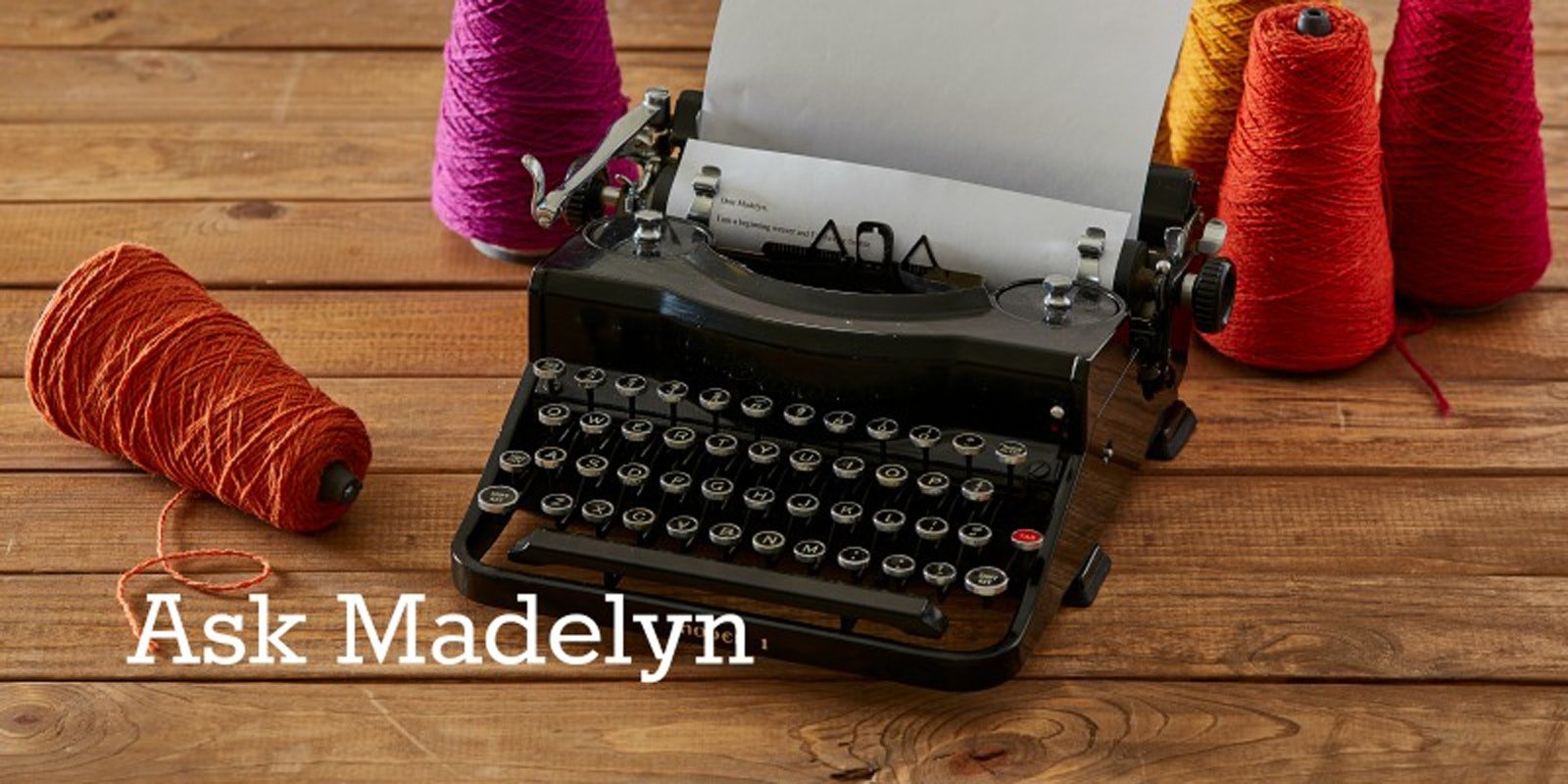I am weaving a summer and winter table runner with a strongly contrasting pattern weft (to ground warp and weft colors). I would like the hem section not to show as all tabby weft, but I don’t want the turned hem to be bulky by using the pattern weft in the hem section. What is the best way to treat the hem sections? —Diane
Hi Diane!
There are several different ways to treat the hems of a fabric with a supplementary pattern weft. If you want the pattern weft to appear on the top surface of the cloth, you'll need to turn the hem twice so that the second fold is made at the edge of the pattern. To reduce the bulk of the two sections of the fold (usually about an inch total of fabric to turn a half-inch hem, more if you want the hem to be deeper), you can use a finer tabby weft there and beat it relatively gently (try a 20/2 pearl cotton weft in this area if the rest of the fabric is woven with a 10/2 pearl cotton tabby weft, for example).
Some weavers like table runners (and fabrics for other purposes) to be reversible. It is possible to weave the hem section so that when you turn the fabric over, the pattern in the hem section is consistent with the pattern on the reverse of the fabric. For a half inch or so before and after the pattern you are weaving for the face of the runner, reverse the positions of the pattern shafts and use them in the reverse order. In other words, if the first half inch of pattern begins with 4 picks Block A, 6 picks Block B, 8 picks Block A (alternating with tabby), weave the half inch before the pattern with 8 picks Block B, 6 picks Block A, 4 picks Block B (do the same thing at the other end only in reverse if the pattern is symmetrical). For the half inch of fabric that will be turned completely under and not show at all, use no pattern weft and a finer tabby weft (as above).
If you are weaving an 8-shaft pattern, reversing the blocks for that half inch at each end will be a bit harder and require tie-up changes for the pattern shafts, but it can be done.
You can also decide to use ladder hemstitching or some other edge treatment that will make a design plus out of an area that only shows the tabby weft.
—Madelyn

